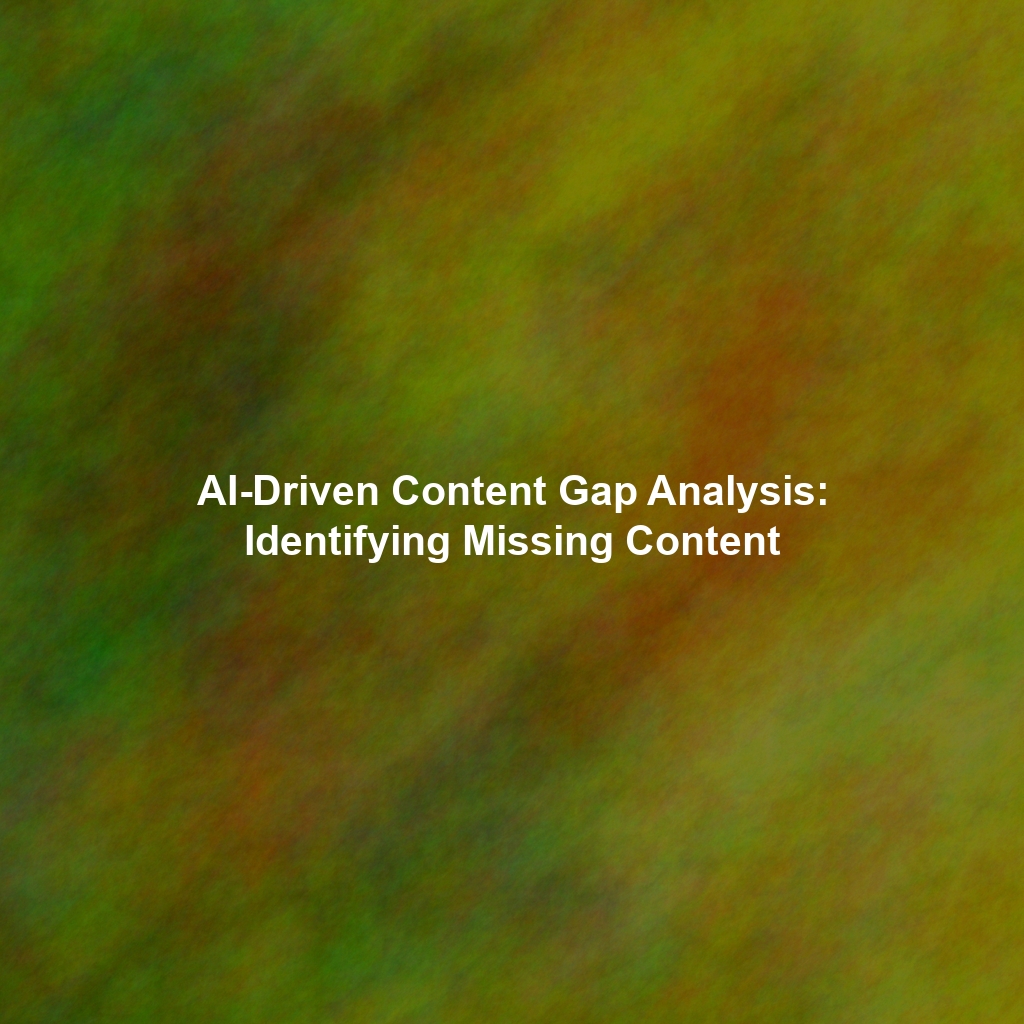Introduction: The Dawn of Hyper-Personalized Content
The Current State of Content Personalization
Content personalization isn’t a new concept, but its implementation has often been rudimentary. Basic segmentation based on demographics or past purchases has been the norm. While this offers some level of targeting, it often misses the nuances of individual preferences and behaviors. Think of it as offering a generic “thriller” recommendation to someone who bought a spy novel, without understanding their specific interest in Cold War settings or female protagonists.
Current personalization techniques often rely on:
- Rule-Based Systems: These systems use pre-defined rules (e.g., “If a user viewed product X, show them related products Y and Z”). They are simple to implement but lack adaptability.
- Basic Segmentation: Grouping users based on limited data points like age, location, or purchase history. This offers a broader approach but struggles to capture individual nuances.
- Email Marketing Personalization: Using merge tags to insert a user’s name or past purchase details into email campaigns. This is a basic form of personalization that can feel impersonal if overused or poorly executed.
While these methods provide a foundation, they often fall short of delivering truly personalized experiences that engage and convert users effectively. They lack the sophistication and adaptability needed to keep pace with evolving customer needs and expectations.
AI’s Role in Revolutionizing Content Personalization
AI, particularly machine learning, is transforming content personalization from a reactive process to a proactive, dynamic one. AI algorithms can analyze vast amounts of data, including browsing history, social media activity, purchase behavior, and even real-time contextual data, to understand individual user preferences and predict their needs. This allows for the creation of highly personalized content experiences that are more relevant, engaging, and effective.
Key AI Technologies Driving Personalization:
- Machine Learning (ML): ML algorithms can learn from data to identify patterns and predict future behavior. In content personalization, ML can be used to recommend relevant articles, products, or videos based on a user’s past interactions.
- Natural Language Processing (NLP): NLP enables computers to understand and process human language. This is crucial for analyzing user-generated content, such as social media posts and reviews, to understand sentiment and identify relevant topics.
- Deep Learning: A subset of machine learning that uses artificial neural networks with multiple layers to analyze data and identify complex patterns. This is especially useful for understanding image and video content and identifying user preferences based on visual cues.
- Predictive Analytics: Using data and statistical techniques to predict future outcomes. In content personalization, predictive analytics can be used to anticipate a user’s needs and proactively offer relevant content or offers.
AI empowers marketers to move beyond basic segmentation and create dynamic user profiles that are constantly updated based on real-time data. This allows for the delivery of highly targeted and relevant content at every stage of the customer journey.
How AI is Changing Content Personalization: Practical Applications
The transformative power of AI in content personalization is evident across various applications:
Website Personalization:
AI algorithms can analyze a visitor’s behavior on a website to personalize the content they see. This can include:
- Personalized Product Recommendations: Suggesting products based on browsing history, past purchases, and items added to the shopping cart.
- Dynamic Content Display: Showing different headlines, images, or calls to action based on a user’s interests and demographics.
- Personalized Search Results: Ranking search results based on a user’s past searches and preferences.
Email Marketing Personalization:
AI can enhance email marketing by:
- Personalized Email Content: Creating email content that is tailored to each subscriber’s interests and needs.
- Optimal Send Times: Determining the best time to send emails to individual subscribers based on their past engagement patterns.
- Dynamic Subject Lines: Generating subject lines that are most likely to resonate with individual subscribers.
Social Media Personalization:
AI can be used to personalize social media experiences by:
- Targeted Advertising: Delivering ads that are highly relevant to individual users based on their interests and demographics.
- Personalized Content Feeds: Curating content feeds that are tailored to each user’s preferences.
- Sentiment Analysis: Monitoring social media conversations to identify and respond to customer feedback in a personalized manner.
Personalized Video Content:
AI is enabling the creation of personalized video experiences, including:
- Dynamic Video Assembly: Creating unique video versions by stitching together different scenes or segments based on user data.
- Personalized Introductions: Tailoring the beginning of a video to address the viewer directly and mention relevant information.
- Interactive Video Experiences: Offering personalized pathways through a video based on user choices and interactions.
The Benefits of AI-Powered Content Personalization
Investing in AI-powered content personalization yields significant benefits for businesses:
- Increased Engagement: Personalized content is more likely to capture and hold a user’s attention, leading to higher engagement rates.
- Improved Conversion Rates: By delivering relevant content at the right time, AI-powered personalization can significantly boost conversion rates.
- Enhanced Customer Loyalty: Personalized experiences demonstrate that a business values its customers, fostering stronger relationships and increased loyalty.
- Higher ROI: By optimizing content for individual users, AI-powered personalization can generate a higher return on investment for marketing efforts.
- Deeper Customer Insights: The data gathered to fuel AI personalization provides invaluable insight into customer behavior and preferences, informing broader marketing strategies.
Challenges and Considerations
While the potential of AI in content personalization is immense, there are challenges and considerations to keep in mind:
- Data Privacy: Collecting and using user data for personalization must be done responsibly and ethically, complying with privacy regulations like GDPR and CCPA. Transparency and user consent are paramount.
- Algorithmic Bias: AI algorithms can perpetuate existing biases in data, leading to unfair or discriminatory outcomes. It’s crucial to ensure that algorithms are trained on diverse and representative datasets.
- Implementation Complexity: Implementing AI-powered personalization requires specialized expertise and resources. Businesses may need to invest in training or partner with external AI providers.
- Over-Personalization: Too much personalization can feel intrusive and creepy, leading to a negative user experience. It’s important to strike a balance between personalization and user privacy.
- Maintaining Data Accuracy: The effectiveness of AI personalization hinges on the accuracy and completeness of the data it uses. Continuous monitoring and data cleansing are essential.
The Future Landscape: What to Expect
The future of AI and content personalization is bright, with several exciting developments on the horizon:
- Hyper-Personalization: Moving beyond basic segmentation to create truly individual content experiences that are tailored to each user’s unique preferences and needs.
- AI-Powered Content Creation: AI will play an increasingly important role in content creation, generating personalized headlines, summaries, and even entire articles or videos.
- Real-Time Personalization: Delivering personalized content in real-time based on a user’s current context and behavior.
- Predictive Personalization: Anticipating a user’s needs and proactively offering relevant content or offers before they even realize they need it.
- Ethical AI: A growing emphasis on responsible and ethical AI practices, ensuring that personalization is used in a way that is fair, transparent, and respectful of user privacy.
We can expect to see more sophisticated AI models that can understand nuanced customer preferences, anticipate needs, and create truly engaging and personalized experiences across all channels. The key will be focusing on building trust, respecting privacy, and ensuring that AI is used to enhance, not detract from, the human connection.
Conclusion: Embracing the Personalized Future
AI is revolutionizing content personalization, enabling businesses to create more relevant, engaging, and effective experiences for their customers. By embracing AI-powered personalization, businesses can build stronger relationships, drive higher conversion rates, and gain a competitive edge in today’s crowded digital landscape. While challenges and ethical considerations exist, the potential benefits of AI-driven content personalization are undeniable. The future belongs to those who can harness the power of AI to understand and serve their customers on a truly individual level.
 Skip to content
Skip to content

